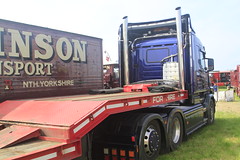
By Trevor Richards
Launching a new product to your customers and potential customers requires meticulous planning and execution. Here are some ideas to get you started.
Advertising
Begin advertising your new product several weeks before its launch. That way you build anticipation which helps spread the news via word of mouth too, beyond your existing customer base. Some items, like children’s toys, should only be advertised once they are in shops so they can be bought shortly after seeing an advert.
Determine demand – you don’t want to over- or under-shoot your initial product run. Consider whether or not informing your customer base of how many products will be available from the first run will increase anticipation and demand – ‘Limited Run’ is often a great selling point.
Inform the media via carefully scheduled press releases that focus on a unique selling point or quirky story to your product launch. Consider using a public relations agency to advise you here.
Hold a launch party
A launch party is a brilliant way to introduce a new product to existing customers and draw in potential new customers. It will also generate publicity for your company and the product.
[youtube]http://www.youtube.com/watch?v=aVZIc-qx_fI[/youtube]
However, if the launch misses its mark, it can be a very expensive investment so enlist the help of event management experts.
There are plenty of event planners out there specialising in this sort of event.
Ask yourself these questions and gear the vent to achieving the answers.
What are you trying to achieve?
Who do you want to impress?
Are you expecting to walk away with contacts or actual orders?
Successful event management requires proper budgeting. Your budget should be less than 10% of expected sales of your new product.
You know your market. You know your business. You know your product. But do you know marketing? If you’ve got a marketing department get them involved from the start.
If not, consider hiring a marketing company as well as an event management company to help with appearing unique.
Explain in detail what the image for your company and this product is. If it’s a luxury product or brand, your event should reflect that.
Be sure to invite your best customers – even if your new product may not be relevant to them. These people have a history with you and an invitation will make them feel special and so more loyal than ever. They can also attest to your good products, customer service and general standing.
Invite the press – this is a no-brainer, you’ll need the publicity!
Invite the people that you wish were your customers – again, they’ll feel special and therefore more likely to buy from you.
Send press releases out at regular intervals before the event. Say, 60 days before, 30 days before, and a last one 15 days before.
Be sure to mention and special guests, offers or giveaways you have planned.
Promote Your Product Online
Create a website or extend your existing one so that the curious consumer can learn all about your product. Spread the word using social media sites like Twitter and Facebook. If you can, send out free samples to specialist websites and bloggers so they can review your product – make sure they work though!
Above all, pay attention to detail and your product launch will go smoothly, resulting high sales and customer satisfaction.
About the Author: Trevor Richards is writing on behalf of OWL Event Management, specialists in
event management
and planning.
Source:
isnare.com
Permanent Link:
isnare.com/?aid=605950&ca=Marketing


